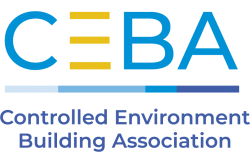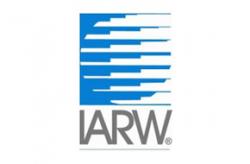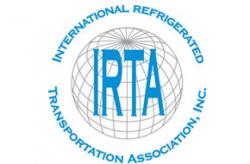Is Training Really the Best Medicine?
Diagnosing employee performance issues can help reduce labor shortfalls.
While the success of COVID-19 vaccines shines a much-anticipated light at the end of a long, dark tunnel, temperaturecontrolled 3PL leaders are turning their attention back to another long-awaited antidote: a solution to the industry’s talent shortages.
The pandemic offered few favors to employers already in search of qualified labor. Suddenly, workers and managers alike wrestled with concerns over workplace safety in an industry that wasn’t fully afforded the opportunity to work from home. In countries like the United States, pandemic-related legislation offered financial relief to those whose jobs were furloughed or terminated while, at the same time, incentivizing some workers to voluntarily end their employment in favor of short-time financial gain. Despite the promise of a return to normalcy, it may be too soon to transfer the industry’s talent dilemma to the recovery ward. A recent article from Forbes predicts a pending wave of voluntary departures and resignations in what labor leaders are calling a “turnover tsunami.” The cause – restless job seekers eager for promotion and pay raises after a pause of more than a year on their job search. This prognosis presents a problem on multiple fronts in an industry accustomed to turning over approximately one out of every three employees in a typical year (“2020 IARW North American Warehouse Employee Turnover Survey”). In addition to lost institutional knowledge, the website Glassdoor estimates that the cost of onboarding a new employee can exceed $4,000 per hire. In our industry, where new hires may not remain on the job for 30 days, these costs can quickly add up. Simply put, there may be no immediate end in sight to recruiting and rapidly onboarding new talent. The difference between an employee’s current level of performance and their optimal level of performance is their performance gap. Now more than ever, managers and HR leaders need to master the skill of quickly diagnosing and treating performance gaps. Managers tend to react by quickly prescribing “more training” to whatever performance gaps ail them, only to be disappointed when the desired effect isn’t achieved, and the pain persists. The best remedy depends on the type of gap itself.
Knowledge Gaps
Knowledge is power, or so the saying goes, and while knowledge is important, putting the knowledge to use at the right time is what counts. Let’s take, for example, new hire onboarding. The knee-jerk reaction may be to load up a new employee with information to ensure they never find themselves feeling inadequate or at a loss to problem solve. While that approach may be well-intentioned, the result usually contributes to a sense of information overload. Instead of the employee feeling as though they have what they need to succeed, they end the day feeling like their head is spinning. As you approach knowledge gaps, consider separating “need to know” information from “nice to know” information. To rule out any extraneous details, identify what information the new hire will need to access and apply to their job in their first 30 days. Then, focus your onboarding efforts accordingly. On day 31, introduce new information for the next 30 days. Too often, companies front-load new hires with knowledge that they won’t need immediately and expect them to mentally haul it along until they do. When information isn’t used, it gets lost to make room for new information that is more immediately relevant. To decide how to fill a knowledge gap, consider how readily your employees need to access information. In any job, there is information that needs to be committed to memory and information that is acceptable to retrieve through reference. So many onboarding programs focus on a cover-tocover walkthrough of the employee manual. With safety being paramount within the cold chain environment, new hires should readily recall the safety processes and procedures that prevent incidents or accidents. It’s less critical that they commit the rate at which they accrue paid time-off to memory.
Skill Gaps
From day one, whether it’s essentials like utilizing the time clock system or specialized techniques such as operating high-reach lift trucks, warehouse operators have no shortage of required skills. And while training sessions are certainly one way to suture a skill gap, it’s worth noting that training without practice is worthless when it comes to skill development. Still, practice is risky because it’s prone to failure, and failure can result in lost time, lost productivity and potentially even lost revenue. So how do you allow space for skill development while managing and minimizing failure? This is where guided practice comes in. Just as a surgical student doesn’t enter the operating room without supervision, your warehouse operators can sharpen their skills under the watchful eye of more seasoned personnel. A best practice within the warehouse environment is to assign a mentor to aid the new-hire employee. The mentor’s role is to show a new employee the ropes, which includes demonstrating to new hires how to complete a task and then turning over the practice to them. Guided practice with a mentor works best when broken down into three simple steps:
Step 1. The mentor should demonstrate how the task is completed. The type of task should be one the new employee will perform often, such as order picking.
Step 2. The mentor and the new employee should perform the task together. Learn by doing allows the new employee to gain necessary hands-on experience while under supervision.
Step 3. The mentor should allow the new employee to demonstrate how to perform the task independently. This step allows the mentor to offer feedback on areas of success and areas of opportunity.
The right mentor offers seasoned experience in the form of training and assimilating the new employee to the organization. This will dramatically impact the performance of a new hire, allowing them to ramp up to speed quickly.
Motivation Gaps
Sometimes the performance issue is not rooted in knowledge or skill. Staff might not be included in a particular process. Or maybe the process has changed, and they are concerned about what will be required to implement the change. It’s possible the team member may feel insecure about their ability to perform at the level needed for the change to be successful. In any one of these cases, the performance gap is a matter of motivation. Motivation gaps don’t necessarily infer that employees are not interested in making an effort to succeed – though that could be the case.
The defining characteristic of motivation gaps is that, try as you might, training won’t solve them. An employee who is consistently late for their shift will not start arriving on time because of a training session on time management skills or a refresher course on your company’s time and attendance policy. Not only will you not see results with the repeat offender, but you’re likely to demotivate high-performing teammates who resent spending time in unnecessary training. While the carrot-and-stick method of incentivizing or reprimanding may seem like your only option for motivating employees, you’ll be better off investing your time and efforts in one-on-one performance coaching. While an internet search will turn up countless results for ways to structure a coaching conversation, there is one underlying element in each of them: managers must resist the temptation to spout advice. Employees who are experiencing motivation gaps are having trouble seeing the bigger picture of their performance. The key to motivating them is helping them find the missing clarity and inviting them to partner with you in prescribing the solution. While this isn’t a simple fix, the recommendation is to start by linking the employee’s performance to the overall performance of the department, location and the company. This will allow them to start connecting the dots on how their individual performance impacts organizational performance.
Environmental Gaps
On occasion, the performance issues that your team members are experiencing are no fault of their own. Take, for example, a cold storage facility that isn’t meeting its goal on turn times. Instinctively, you might assume team members need training on efficiently inspecting and unloading a truck. Imagine, instead, that the problem has little to do with human performance but rather system performance. Perhaps your arrival processes have some inefficiencies that create a bottleneck at the dock? Maybe your warehouse management system is lagging because you’re running an outdated version of the software? You can not fix human performance if the gaps have nothing to do with humans. Before subjecting your warehouse personnel to training that won’t move the needle, take the pulse of your systems, processes and environment to uncover the true cause of what your team is experiencing.
Bridging The Gaps
Once you have completed a full check-up on the performance gaps you’re facing, you can begin treating them. In instances where training is an appropriate intervention, make sure the training is aligned with your business priorities. The time and resources invested in training should have a direct, positive impact on the metrics that are most important to your operation. Just as your physician monitors your temperature, blood pressure and heart rate, your organizational KPIs are the vital signs against which your talent development efforts should be compared. When training isn’t the best medicine, seek a second opinion from other members of your leadership team to identify an appropriate solution. Properly and effectively treating performance issues can reduce the severity of labor challenges during these exceedingly tumultuous times. After all, an ounce of prevention is worth a pound of cure.
SHANE JACQUES is the Director of Training and Talent Development for the Global Cold Chain Alliance.
Email: sjacques@gcca.org
CALI IVEY is the Talent Management Program Manager for Americold Logistics.
Email: Cali.Ivey@americold.com



